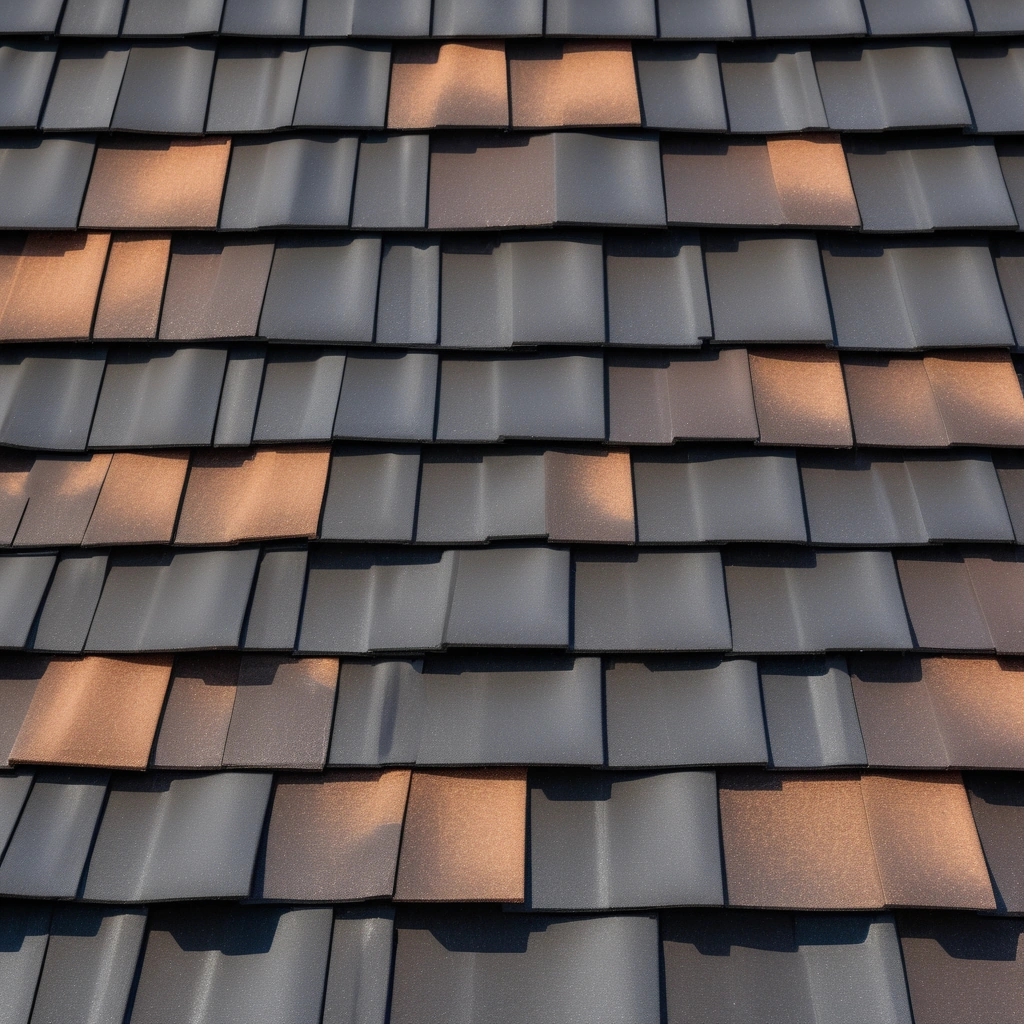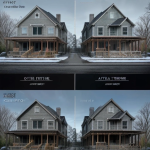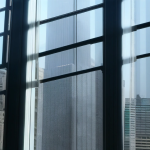Texas Roof Showdown: Metal vs. Asphalt Shingles – Which Reigns Supreme in 2024’s Extreme Heat?
Introduction: The Texas Roofing Gauntlet
The Texas sun isn’t just bright; it’s relentless. Year after year, it beats down on our homes, turning attics into ovens and stressing roofing materials to their breaking point. From scorching summers to unpredictable storms, Texas weather presents a unique challenge to homeowners seeking a durable and cost-effective roofing solution. In 2024, the age-old debate between metal roofing and asphalt shingles continues, but with a renewed focus on heat resistance and long-term performance. Which material truly reigns supreme in the face of Texas’ extreme climate?
For Texas homes, the choice of roofing materials is more than just an aesthetic consideration; it’s a crucial investment in property value and comfort. The intense solar radiation and fluctuating temperatures demand roofing solutions engineered for resilience. Asphalt shingles, while historically prevalent, face increasing scrutiny regarding their ability to withstand prolonged exposure to such harsh conditions, leading many homeowners to explore alternatives like metal roofing. Navigating the Texas roofing landscape requires understanding not only the immediate roofing cost but also the long-term implications of energy efficiency and roof durability.
Metal roofing, with its superior heat reflectivity, offers a compelling advantage in reducing cooling costs, a significant factor for Texas homeowners. This translates to tangible savings on energy bills, offsetting the higher initial investment over time. Moreover, the extended lifespan of metal roofing compared to asphalt shingles minimizes the need for frequent replacements, further enhancing its long-term value proposition. Engaging qualified roofing contractors familiar with the nuances of Texas climate is essential for informed decision-making.
The Texas Real Estate market increasingly values homes equipped with features that enhance energy efficiency and minimize maintenance. As such, the choice of roofing materials can significantly impact a property’s appeal and resale value. Metal roofing, often perceived as a premium upgrade, can serve as a strong selling point, particularly for environmentally conscious buyers. Conversely, a poorly maintained or deteriorating asphalt shingle roof can detract from a property’s overall value. Therefore, homeowners should carefully weigh the long-term benefits and potential return on investment when selecting roofing materials, considering both immediate cost savings and future marketability.
Asphalt Shingles: The Traditional Choice Under Fire
Asphalt shingles have been a mainstay in Texas roofing for decades, prized for their initial affordability and straightforward installation. Their ubiquitous presence across Texas homes stems from their diverse range of styles and colors, offering homeowners aesthetic flexibility to complement various architectural designs. The appeal of asphalt shingles, however, diminishes under the relentless Texas sun, where heat and UV radiation significantly impact their performance and longevity. Despite their widespread use, understanding the limitations of asphalt in the context of the Texas climate is crucial for making informed roofing decisions.
While asphalt shingles present a lower initial roofing cost, Texas homeowners must carefully consider their susceptibility to heat absorption. This characteristic directly correlates with increased energy consumption, as the absorbed heat radiates into the attic, forcing HVAC systems to work harder to maintain comfortable indoor temperatures. Moreover, the intense Texas climate accelerates the degradation of asphalt shingles, leading to premature cracking, granule loss, and ultimately, a shorter lifespan compared to cooler regions. Consequently, the long-term roofing cost associated with asphalt can outweigh its initial savings due to frequent repairs and replacements, a factor that astute Texas Real Estate investors and homeowners are increasingly recognizing.
Texas roofing contractors offer a spectrum of asphalt shingle options, each with varying degrees of durability and heat resistance. 3-tab shingles represent the entry-level choice, providing basic protection at the lowest cost but with limited longevity in the Texas climate. Architectural shingles, also known as dimensional shingles, offer enhanced thickness and wind resistance, making them a more robust option for Texas homes. Cool shingles incorporate reflective granules designed to mitigate heat absorption, representing an incremental improvement in energy efficiency compared to traditional asphalt.
However, even with these advancements, asphalt shingles struggle to match the inherent heat resistance and roof durability of metal roofing systems, particularly in the face of extreme Texas heat. **Pros:** Affordability: Asphalt shingles offer the lowest upfront roofing cost. Installation: Their installation process is relatively simple, leading to reduced labor expenses. Variety: A wide array of colors and styles ensures aesthetic compatibility with diverse Texas homes. **Cons:** Heat Absorption: Asphalt shingles readily absorb heat, contributing to elevated attic temperatures and higher energy bills.
Lifespan: The intense Texas climate significantly shortens the lifespan of asphalt shingles, necessitating more frequent replacements. **Types of Asphalt Shingles:** 3-Tab Shingles: These are the most economical but least durable option for Texas roofing. Architectural Shingles (Dimensional Shingles): Offering improved thickness and wind resistance, they represent a more resilient choice for Texas homes. Cool Shingles: Engineered with reflective granules, these shingles offer enhanced heat resistance compared to traditional asphalt, but still lag behind metal roofing in energy efficiency.
Metal Roofing: The Durable and Energy-Efficient Contender
Metal roofing is rapidly becoming a preferred choice for Texas homeowners seeking superior durability and energy efficiency compared to traditional asphalt shingles. While the upfront investment is undeniably higher, the long-term advantages of metal roofing often outweigh the initial cost, making it a financially sound decision for those planning to stay in their Texas homes for the long haul. Pros:
Heat Reflectivity: Metal roofs excel at reflecting solar radiation, a critical advantage in the intense Texas climate.
By reflecting a significant portion of the sun’s rays, metal roofs keep attics noticeably cooler, directly translating to reduced energy consumption and lower air conditioning bills. Longevity: One of the most compelling benefits of metal roofing is its exceptional lifespan. Unlike asphalt shingles, which typically require replacement every 15-20 years in Texas due to weathering, metal roofs can last 50 years or more, offering decades of reliable protection. Energy Efficiency: The superior heat resistance of metal roofing directly contributes to significant energy savings.
Reduced heat absorption minimizes the strain on HVAC systems, leading to lower monthly utility bills and a smaller carbon footprint. Cons:
Initial Cost: The primary barrier to entry for many homeowners is the higher initial cost of metal roofing compared to asphalt shingles. However, it’s crucial to consider the long-term cost savings associated with reduced energy consumption and extended lifespan. Potential Noise: Some homeowners express concerns about noise during rainstorms, but this can be effectively mitigated with proper insulation and the use of sound-dampening underlayment.
According to a recent survey by the Metal Roofing Alliance, over 80% of homeowners with metal roofs report no significant noise issues. Types of Metal Roofing:
Standing Seam: Considered a premium option, standing seam metal roofing features concealed fasteners, creating a sleek, modern aesthetic and exceptional weather resistance. Its interlocking panels provide superior protection against leaks and wind uplift, making it a top choice for longevity and performance in the demanding Texas climate. Corrugated Metal: A more economical option, corrugated metal roofing offers a classic, rustic appearance with exposed fasteners.
While durable and cost-effective, it may not be as energy-efficient as standing seam due to the exposed fasteners. Metal Shingles/Shakes: For homeowners who prefer the traditional look of shingles or shakes, metal shingles and shakes provide the best of both worlds, combining the aesthetic appeal of traditional roofing materials with the durability and energy efficiency of metal. These options often feature interlocking designs for enhanced weather resistance and ease of installation. When selecting roofing materials for Texas homes, consulting with experienced roofing contractors is essential to determine the best solution for your specific needs and budget. The right choice balances roofing cost, roof durability, and long-term energy efficiency to withstand the Texas roofing gauntlet.
Heat Resistance & Energy Efficiency: A Side-by-Side Comparison
The key battleground in the Texas roofing showdown is, without question, heat resistance and energy efficiency. Metal roofs offer a distinct advantage in this arena due to their inherent high reflectivity. Studies consistently demonstrate that metal roofing can reflect upwards of 90% of solar radiation, a stark contrast to asphalt shingles, which typically reflect a mere 10-25%. This significant difference translates directly into tangible energy savings for Texas homes, a critical consideration in our demanding climate.
The choice of roofing materials directly impacts the long-term comfort and financial well-being of homeowners across the state. The Oak Ridge National Laboratory’s research underscores this point, revealing that homeowners who opt for metal roofing can potentially reduce their cooling costs by as much as 40%. Of course, the precise savings will fluctuate based on variables such as the home’s existing insulation, the specific microclimate of its location within Texas, and the gauge and coating of the metal roofing selected.
While “cool roofs,” a specialized type of asphalt shingles designed to enhance reflectivity, represent an improvement over traditional asphalt, they still fall short of the heat resistance offered by metal roofing solutions. This makes metal a compelling option for those prioritizing energy efficiency in Texas roofing. Consider a homeowner in Austin with a 2,000-square-foot home as a prime example. By transitioning from standard asphalt shingles to a highly reflective metal roof, they could potentially realize hundreds of dollars in annual energy savings.
This not only accelerates the return on their initial investment in metal roofing but also cultivates a more comfortable and consistently cool living environment, a welcome respite from the intense Texas heat. Moreover, the increased roof durability associated with metal roofing translates to fewer repairs and a longer lifespan, further enhancing its long-term value proposition for Texas homeowners. Engaging experienced roofing contractors is crucial for proper installation and maximizing these benefits. Furthermore, the impact extends beyond individual savings.
The widespread adoption of energy-efficient roofing materials like metal can contribute to a reduction in overall energy demand within Texas, easing strain on the power grid during peak summer months. This collective benefit aligns with broader sustainability goals and enhances the resilience of Texas communities in the face of increasingly extreme weather patterns. When evaluating roofing cost, it’s crucial to consider these long-term benefits alongside the initial price tag, recognizing that metal roofing represents a strategic investment in both comfort and environmental responsibility.
Cost Analysis: Initial Investment vs. Long-Term Savings
While asphalt shingles present a lower initial barrier to entry, metal roofing distinguishes itself by offering superior long-term value through extended lifespan and enhanced energy efficiency, crucial considerations for Texas homes. A comprehensive roofing cost analysis extends beyond the initial price tag, demanding scrutiny of maintenance, repair expenses, and the inevitability of eventual replacement. For homeowners in Texas, factoring in the relentless Texas climate is paramount when evaluating roofing materials. Engaging qualified roofing contractors can provide tailored insights into the best options for specific properties and budgets.
Initial investments reveal a clear disparity: asphalt shingles typically range from $3.50 to $5.50 per square foot installed, while metal roofing commands a higher premium, ranging from $9.00 to upwards of $16.00 per square foot. However, this upfront cost difference belies the significant long-term advantages of metal roofing. Asphalt shingles, particularly in the intense Texas heat, often exhibit a lifespan of just 15-20 years, necessitating relatively frequent replacements. Metal roofing, conversely, boasts a lifespan exceeding 50 years, drastically reducing the lifecycle costs associated with roof ownership.
This roof durability directly impacts long-term financial planning for Texas homeowners. To illustrate the return on investment (ROI), consider a hypothetical 2,000 sq ft roof. An asphalt shingle roof, with an initial cost of $8,000, might require a complete replacement within 20 years, incurring an additional $8,000 expense, totaling $16,000. A metal roof, with a higher initial investment of $20,000, could potentially last for 50 years or more, eliminating the need for replacement during that period.
Furthermore, the superior heat resistance of metal roofing translates to tangible energy efficiency savings. If a homeowner realizes an average annual reduction of $500 in cooling costs, this accumulates to a substantial $25,000 over a 50-year timeframe, further offsetting the initial cost premium. Ultimately, the optimal roofing choice hinges on the homeowner’s individual financial circumstances and priorities within the Texas real estate landscape. For those prioritizing immediate affordability, asphalt shingles may represent the only feasible option. However, for homeowners who prioritize longevity, minimal maintenance, and superior energy efficiency, metal roofing presents a compelling value proposition, delivering a superior return on investment over the long haul. Therefore, understanding the nuances of Texas roofing, including material performance under extreme conditions, is crucial for making an informed decision that aligns with both budgetary constraints and long-term financial goals.


